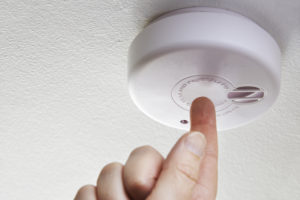
Help Boost Your Memory
Q: Mr. Pedometer, you offer good advice on how we should “move more” for wellness, but is there any way we could also help boost our brain power?
A: That’s a timely question, as June happens to be national Alzheimer’s and Brain Awareness Month. Just in time, our local newspaper included a “Spry Living” insert, with a list of “brain-booster” tips, including the following:
Brain-Boosting Tips for Memory
- KEEP MOVING! Yes, you’ve heard it before, but regular exercise
 tops the list of experts’ recommendations to stave off diseases like Alzheimer’s (dementia) and to stimulate the creation of more brain cells, according to Wendy Suzuki, PhD, a professor of neural science and psychology at New York University and author of Happy Brain, Happy Life. “One study of older adults found that walking 40 minutes a day, three days a week, increased the size of the hippocampus, the brain’s memory center, — effectively reversing age-related loss by a year or two.”
tops the list of experts’ recommendations to stave off diseases like Alzheimer’s (dementia) and to stimulate the creation of more brain cells, according to Wendy Suzuki, PhD, a professor of neural science and psychology at New York University and author of Happy Brain, Happy Life. “One study of older adults found that walking 40 minutes a day, three days a week, increased the size of the hippocampus, the brain’s memory center, — effectively reversing age-related loss by a year or two.” - ENGAGE MULTIPLE SENSES – University of Iowa researchers found that our memory for sounds declines as soon as 4-8 seconds after we hear them. “Repeating something back immediately can help shore up your memory, but seeing the words works even better.”
- CLOSE YOUR EYES – “University of Surrey research shows that shutting your eyes frees up brain power and helps bring back recent and distant memories. Respondents who closed their eyes scored 23 percentage points higher on a memory test.”
- HIT REPLAY TO PRESERVE GOOD MEMORIES – “We tend to remember what we pay attention to,” says Suzuki. “The more you bring a memory back to mind, the stronger it becomes.” Repetition strengthens neural connections, allowing the memory to resist interference from other memories or general degradation.
- DOODLE – “Unlike many dual-task situations, doodling while working can be beneficial,” says Jackie Andrade, PhD, author of a British study that found the activity can boost recall by nearly 30 percent.
- ADD CINNAMON TO YOUR COFFEE [OR TEA] –“The scent boosted cognitive functions – including memory and attention span – in a study at Wheeling Jesuit University. The spice also contains two compounds that may help prevent the brain cell changes that lead to Alzheimer’s.”
Who among us has not had a so-called “senior moment,” perhaps when it comes to remembering a person’s name…or where we left our car keys? If any of the above can help reduce those foggy-brain feelings, they are worth a try!
EAT RIGHT,
MOVE MORE,
AND SLEEP WELL,
FOR A HEALTHY, LONGER LIFE!

